
Esponente della corrente pittorica del Novecento Italiano
Sei in:
BIOGRAFIA
Italiano
1° Periodo: LA RICERCA (1913 -1935)
BETTO LOTTI nasce a Taggia il 12 luglio 1894, figlio di Vincenzo Lotti, professore di disegno, preside e pittore e di Vittoria dei Marchesi Curlo, entrambi liguri.
Studia al Liceo Artistico, indi all’Accademia di Belle Arti di Firenze, ove vive gli anni intensi della sua giovinezza, frequentando gli ambienti artistici e conoscendo Giovanni Papini, Ardengo Soffici, Achille Lega, Primo Conti e Ottone Rosai che diventa il suo grande amico.
Con Rosai tiene la prima Mostra a Firenze presso la Galleria Cavour nel 1913, presentando numerose opere che riscuotono un notevole successo di critica.
Scrive M. Campana: “Siamo nel campo di ricerche e tentativi. I due giovani non hanno forse ancora completamente trovato la loro via, ma hanno molta originalità, coraggio e scioltezza di pensiero. Essi tentano di creare una maniera d’arte che non si serve del vero ma da esso trae ispirazione e lo idealizza, una maniera nuova che io chiamerei “Sensibilismo”.
A Firenze Betto Lotti partecipa intensamente alla vita culturale della città, dedicandosi all’acquaforte, oltre che alla grafica e alla pittura ad olio, scrivendo critiche d’arte per “La Nazione”, collaborando a Riviste quali “Gran Bazar” ed “Eclettica”; lavora come disegnatore e modellatore di plastici topografici all’Istituto Geografico Militare, crea scenografie per il Teatro Comunale di Firenze, per il Teatro “La Pergola” e per i veglionissimi della stampa.
Sono anni ricchi di ansia di vivere, di intensa ricerca pittorica, di opere in cui sono privilegiati soggetti romantico – decadenti quali taverne, avventure d’alcova, libagioni, estasi erotiche e cupe scorribande: ….. “acqueforti incise con robustezza di volumi, nettezza di tratto e una nativa sensibilità per l’armonia chiaroscurale” (A. Longatti). “Gli esiti del lavoro del primo Lotti sono quanto mai significativi per la complessità culturale che sottintendono, per la ricchezza dei rimandi stilistici, per la densità dello spessore espressivo” (L. Caramel). Lotti rivela presto una straordinaria capacità di disegnare, testimoniata da una serie di opere eseguite tra il 1911 e il 1915 che nell’eleganza delle linee richiamano il clima della Secessione Viennese. (M. Pizziolo)
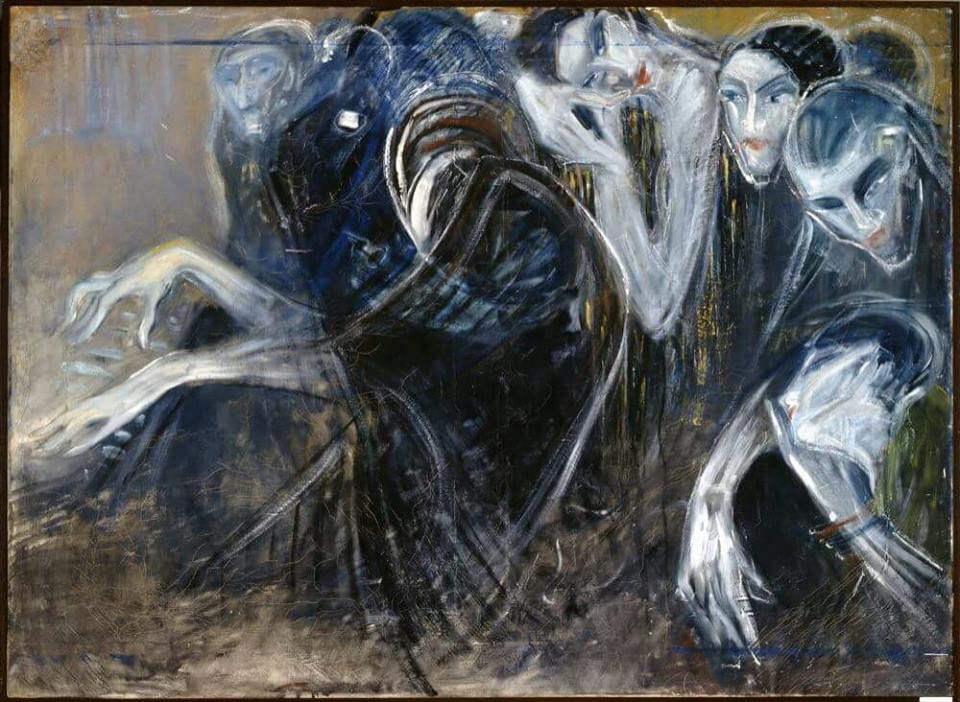
2° Periodo: REALISMO ROMANTICO (1936 - 1969)
Nel 1936 LOTTI si trasferisce a Como dove insegna Educazione Artistica per più di 30 anni, contemporaneamente portando avanti il suo impegno di pittore.
“Superate le inquietudini della giovinezza, egli approda ad un linguaggio piano, “naturale”, in sintonia con il “Novecento”, movimento al quale Lotti resterà fedele fino all’ultimo. Libero ormai dagli estetismi simbolistico-floreali, che pure gli avevano aperto orizzonti europei, l’artista dedica le sue risorse emozionali a descrivere la bellezza della natura.

E’ arrivato alla maturità della sua Arte.
Scrive G.B. Simoni nel 1941: “La natura lo colpisce: in essa ricerca l’anima profonda, la spiritualità delle cose, i suoi paesaggi ci mostrano nitide visioni della Toscana o del bel cielo di Lombardia, contemplate nella realtà, ma rivissute, assorbite dalla spiritualità del pittore che in essa ha scorto intime, nascoste bellezze. Feconda e varia è in questi anni l’attività dell’artista, che ha anche trattato egregiamente e con plauso autorevole l’acquaforte, la china, l’acquarello”.
“Lotti è poeta e proietta sulla tavolozza motivi di profonda intensità spirituale. Un amore per tutto ciò che è umile e dolorante penetra i suoi più freschi e più delicati lavori. Lotti è franco, è rapido nel disegno, di cui possiede eccezionali possibilità: disegni decisi nel tratto pulito o nella macchia controllatamente lirica”. (M. Morandini – 1945).
Sono anni di grande fervore artistico e copiosa è la produzione pittorica.
Notevole è il numero di Mostre personali e la partecipazione a quasi tutte le più importanti Mostre Collettive nazionali.
3° Periodo: NUOVE ESPERIENZE (1970 – 1977)
Durante i suoi quasi 40 anni di vita vissuta a Como, Betto Lotti conosce gli astrattisti comaschi e si lega da sincera e duratura amicizia a Manlio Rho, Mario Radice, Aldo Galli, Carla Badiali, esponenti dello storico “Gruppo Como”
Egli non aderisce alle teorie radicali talora rivoluzionarie degli amici astrattisti, ma indubbiamente risente della loro influenza.
Ed è così che “a poco a poco l’Artista riduce il commosso trasporto coloristico di cui sono intrise le sue opere per mantenere integra ed autosufficiente l’armonia strutturale. La sua pittura si fa più asciutta, più attenta alle forme.”
In questa sua ultima esperienza artistica, egli si lascia quindi relativamente coinvolgere dall’atmosfera razionalistica che si respira a Como, traendone ispirazione. Le opere create tra il 1970 e il 1977 – anno della sua improvvisa morte – ne sono palese dimostrazione.
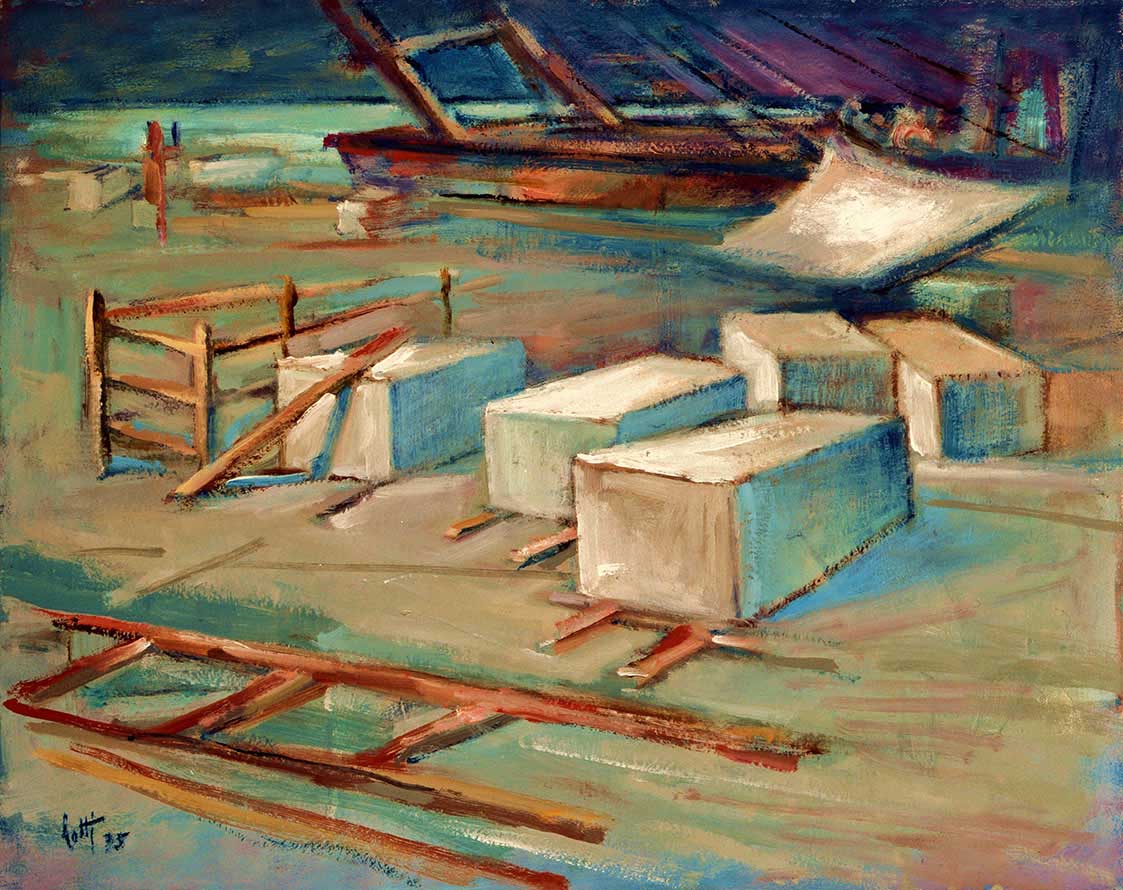
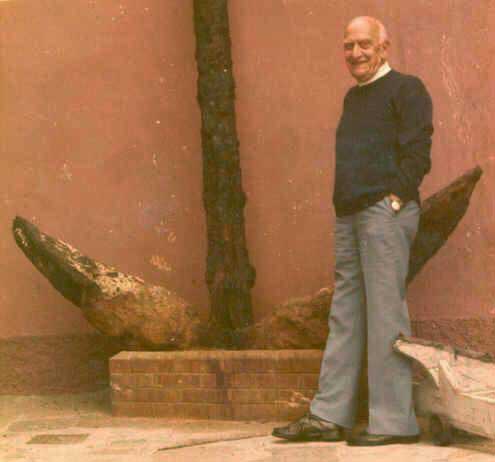
Notizie tratte da
- M. Campana – “Il Nuovo Giornale” – Firenze – 1913
- G.B. Simoni – “L’Italia” – Milano – 1941
- M. Morandini – “L’Ordine” – Como – 1945
- A. Longatti – “Le due Toscane di Betto Lotti” – 1983
- G. Collina – Cenni Biografici – Catalogo Antologica promossa dal Comune di Como – Assessorato alla Cultura – Centro Espositivo San Francesco – 1983
- L. Caramel – Catalogo “Betto Lotti – Acqueforti” – Mostra indetta dal Comune di Milano – Assessorato alla Cultura presso la Biblioteca Comunale Palazzo Sormani – Settembre 1985
- M. Pizziolo – Catalogo Mostra Personale Galleria Bolzani – Milano – 1996
English
Betto Lotti, born in Taggia, Liguria, in 1894, was the son of Vincenzo, an art teacher, headmaster and painter, and of Vittoria dei Marchesi Curlo. His father’s career as a state employee compelled the family and young Betto to frequent transfers throughout Italy, thus forcing him to change schools often. He began his studies in Imperia and was later a student of master artists such as Guglielmo Ciardi and Ettore Tito at the Art School in Venice. The family moved again, to Bologna and finally to Florence, where Betto completed his studies.
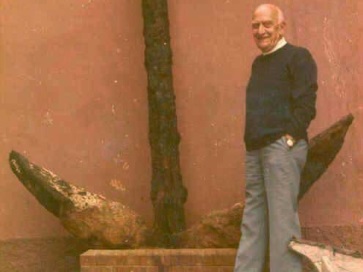
Young Betto Lotti showed an immediate and natural inclination in mastering the traditional engraving and etching techniques, eventually perfected during the academy years. His first collective exhibitions got outstanding recognition. In 1912 he was awarded the Second Prize from the Ministry of Education in Florence. This activity lasted for about a decade and culminated in 1922, when Lotti was selected among the artists featuring at the Tuscan Engravers Exhibition in Montreal, Canada.
Drafted into the army at the beginning of 1915, Lotti was soon sent to the battlefront where he remained until wounded and later imprisoned. In June 1917 he was interned in the Sigmundserberg concentration camp, in Austria. Here, despite being under detention, he was allowed to get back to painting. He eventually won his captors’ appreciation and was even invited to hold an exhibition of his art works in Vienna. The exhibition was very successful and received high praise from critics and audience alike and all works were sold out.
After being repatriated to Italy in September 1918, Betto Lotti returned to Florence. He wanted to get back to work as soon as possible and got in fact hired as a designer and scale modeler at the Military Geographic Institute in Florence; at the same time he started teaching art and worked as set designer for the city’s municipal theatre. He also began a long and fruitful activity in journalism working for the newspaper “La Nazione” and writing art reviews. In the following decade Lotti intensified this activity, particularly with the magazine “Gran Bazar” later named “Eclettica”. He became the magazine’s first co-director and later director, for some time. These were the years of a great cultural upheaval. Lotti joined the Red Coats literary and art café where he met his old friends, famous writers and artists such as Ottone Rosai, Achille Lega, Giovanni Papini, Soffici and Bruno Fallaci. He engaged in a wide range of activities and mastered his skills in various forms of art, both in Italy and also abroad. He started designing billboards for the French company Vercasson, in Paris. Among the many, the so called Lotti Clown have nowadays become part of the vintage poster network, granting Lotti international fame.
These were the years that saw young Betto Lotti attending the Academy of Fine Arts in Florence and fully committing to mastering his style, particularly in charcoal drawing, oil painting and engraving. Here he met Ottone Rosai who became his very good friend and with whom he shared the enthusiasm and experience of the years between 1911 and 1914. In 1913 the two young artists held their first common exhibition at the Cavour Gallery in Florence, displaying 14 paintings each. The fathers of Futurism, Filippo Tommaso Marinetti, Carlo Carrà and Umberto Boccioni, invited to visit the exhibition, were very impressed by the works of the two young artists. Following this, the Florentine chronicles started showing much interest in the work of the two artists. Their success with audience and critics was remarkable. In the works on show, Lotti gave prominence to stylized female figures, almost ghostly visions, striking reflections of profiles and faces, on somber backgrounds. The artists’ expressionist style would later be known as “sensibilism”.
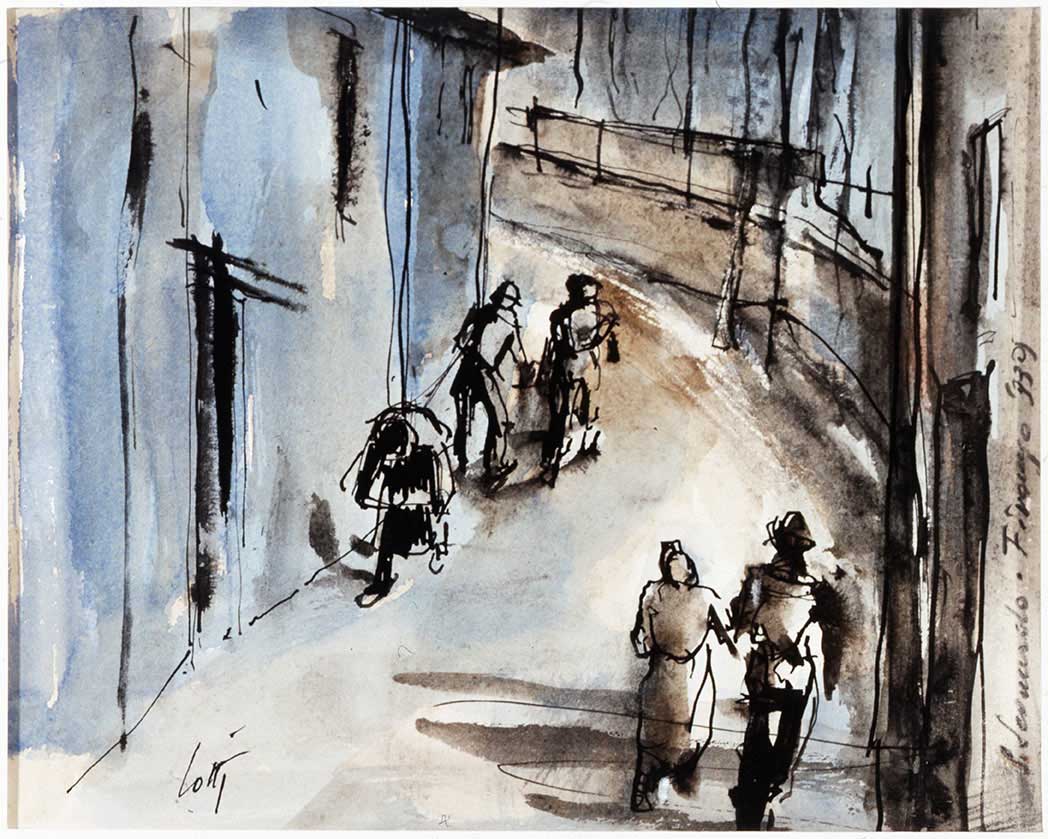

In 1934 Betto Lotti left his beloved Florence and moved to Lombardy to become a teacher. For the first two years he was in Stradella (Pavia), then settled in Como. Here he met and married Professor Angiola Faravelli and the family soon grew with the arrival of two daughters. In his lovely lake city haven, Betto Lotti carried on with his career as a much committed teacher yet also devoted himself to his own art. He got acquainted with the artists of “Gruppo Como”, becoming a good friend of abstract painters Manlio Rho, Mario Radice, Aldo Galli and Carla Badiali and whilst not adhering to the radical theories of the rationalists, he shared much of his experience with them. Betto Lotti, an accomplished artist by now, became an acknowledged member of the Novecento Italiano art movement. The main themes of his oil paintings were landscapes and open spaces, imaginative visions immersed in a soft spiritual aura. He endured in his art activity during the whole last decade of his life. His works appeared in many collective and solo exhibitions. He died in Como on April 13, 1977, at the age of 83.
In the forty years of his life in Como, Betto Lotti did indeed leave a lasting sign of his work and one of great value. From 1934 to 1977, he participated in almost all collective exhibitions held in Lombardy (e. g. the Suzzara Prize or the Angelicum in Milan). He held solo exhibitions in all major cities (Milan, Bergamo, Lecco, Varese, Como, to name a few ); in 1937, as an illustrator, he participated to the Visconti Castle Poster Contest in Pavia and was awarded the first prize; he was one of the founders and also vice president of the Fine Arts Association in Como. ( The full list of his awards and recognitions can be found in the artist’s original monograph). In 1946 he was appointed member of La Permanente in Milan, a top institution in the art world; he was also a member of the Academia Latinitati Excolendae in Rome – 1959 and of the Academia Tiberina in Rome – 1960. He was awarded the Order of Merit for Culture and Art by The Italian Ministry of Education in 1963. Two years later, in 1965, President Saragat appointed him Knight of the Italian Republic.

